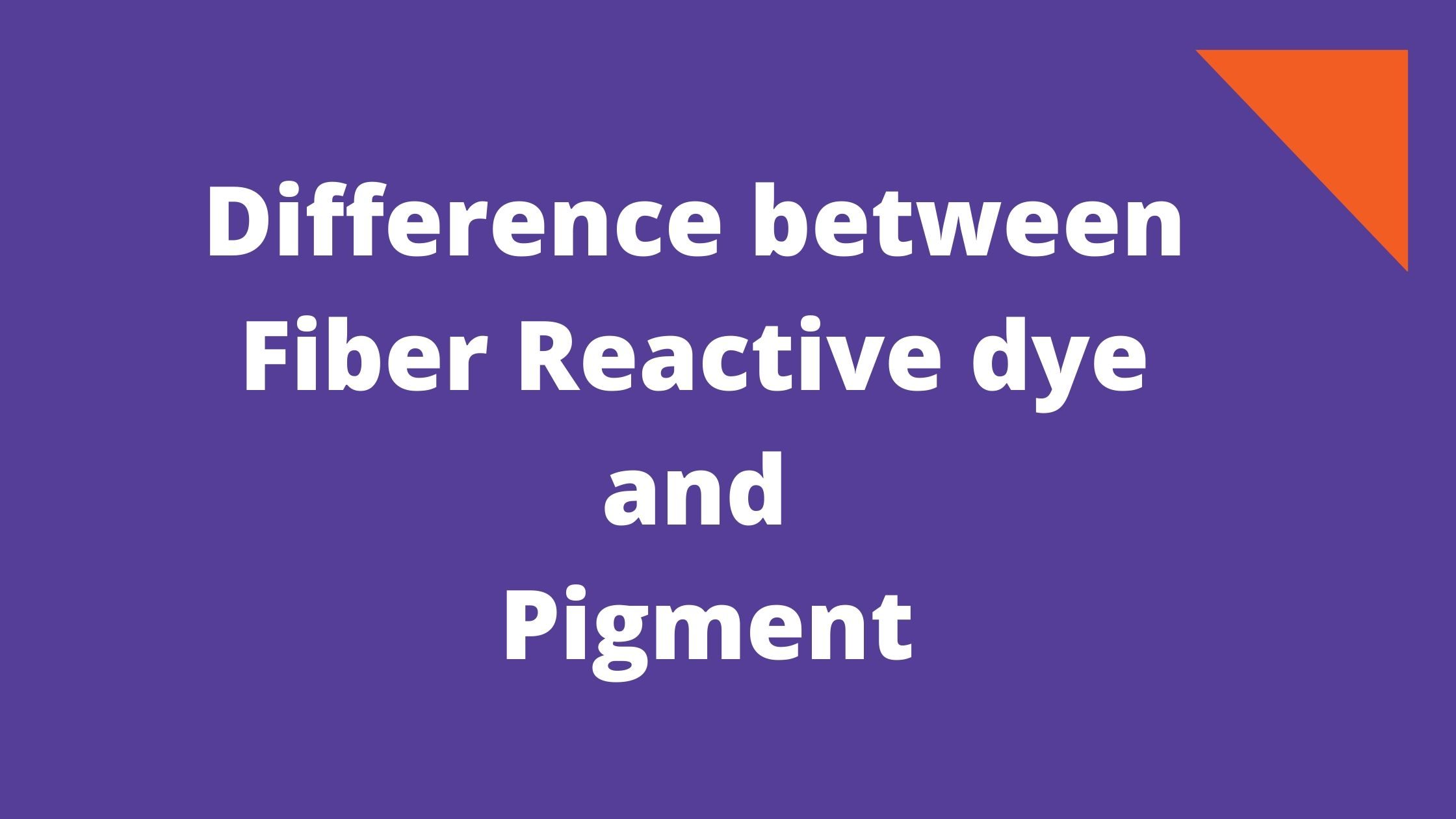Fiber reactive dyes are most popularly used to dye cellulosic fabrics. They chemically react with fibers and form covalent bond with them. They have wide range of shades and stain the textiles in your desired shade.
What Is Pigment?
Pigment comes from Latin word “pingue” which means “to paint”. pigments are aggregated molecules that is highly insoluble in water.
Pigment dyes have no auxo-chrome in it. They don’t form any bond with textiles rather just sit on the top of the fabric. They need the help of binders to adhere the fabric. Here, no chemical reaction takes place.
A Quick Check on Pigment
- Commercial pigments are ranging from 0.1 to 0.5 microns in size.
- Pigment of different sizes are available like spheroidal, cubical, nodular, needle like or flake like pigment.
- Covering power of pigment increases with the smaller size of pigment. That means, the smaller the pigment the highest the tinctorial value of it. It goes on upto the similar order as wavelength of absorbed or reflected light.
Types of Pigment
We’ll see two types of pigment according to the chemical nature of pigment.
- Organic pigment: Indigo, anthraquinoid, thioindigo, azo, phtalocyanin etc are the structures of organic pigment.
- Inorganic pigment: Inorganic pigments are used for metallic, black or brown colors in the form of barrium sulfates, zinc oxide, titanium oxide, aluminium or bronze etc.
If you want a pale or faded look for your garment then pick pigment. If you want consistent vibrant color with uniformity, years later that comes out after wash then you should go for fiber reactive dye. So, i think a question has popped up in your mind that “what is the difference between fiber reactive dye and pigment”, right?
Have a Look Below on the Difference Between Fiber Reactive Dye and Pigment
| Fiber Reactive Dye | Pigment |
| 1. Fiber reactive dye is soluble in water | 1. Pigments are insoluble in water |
| 2.Fiber reactive dye has affinity for fibers | 2.Pigmnts have no affinity for fibers |
| 3.Fiber reactive dyes are applied through aqueous medium | 3.Pigments are applied through adhesive or binder medium |
| 4.This dyes form covalent bond with textiles | 4.Pigments don’t create any bond with textiles |
| 5.They have auxo-chrome in their structure | 5.They don’t have any auxo-chrome in their structure |
| 6.Provide wide range of solid consistent color | 6. Provide aged color appearance onto the garments from the very beginning |
| 7.This dyes are less likely to fade or crock (Color comes out while rubbing against another cloth) | 7.pigments are more likely to fade |
| 8.They are typically used on cotton, silk, rayon, linen, lyocell, and hemp | 8.Typically used on polyester or poly-cotton blends |
| 9.No need of silicone wash to make the fabric feel softer | 9.Additional silicone wash requires to make the fabric feel softer |
The Final Word
Fiber reactive dye and pigment completely functions in a different way. Hopefully, the above “difference between fiber reactive dye and pigment” ,you may got the answer why they performs differently.

